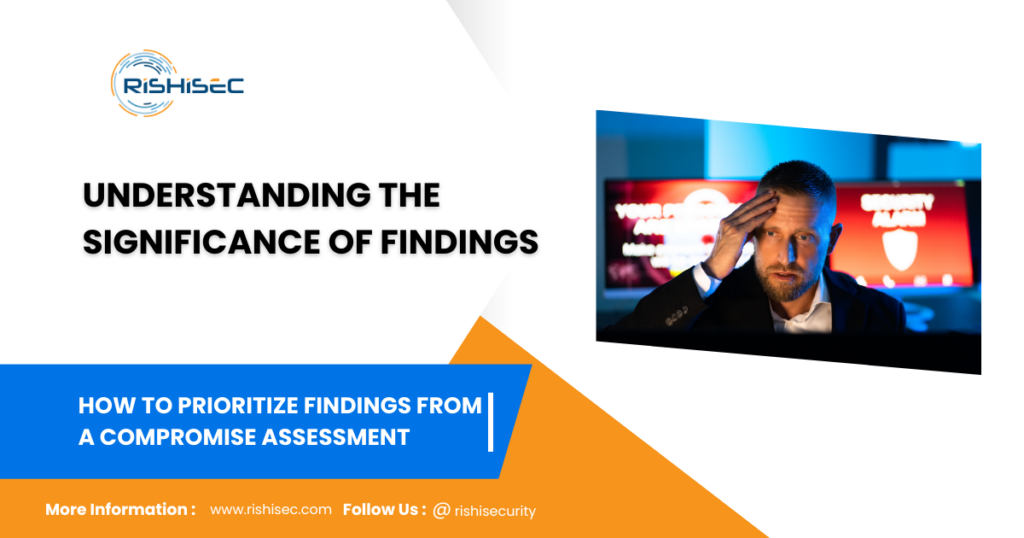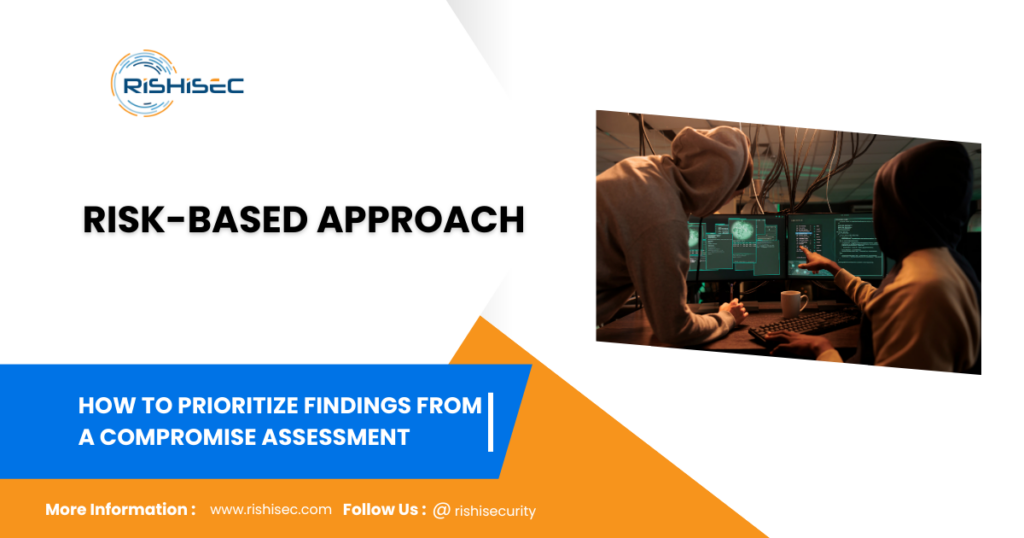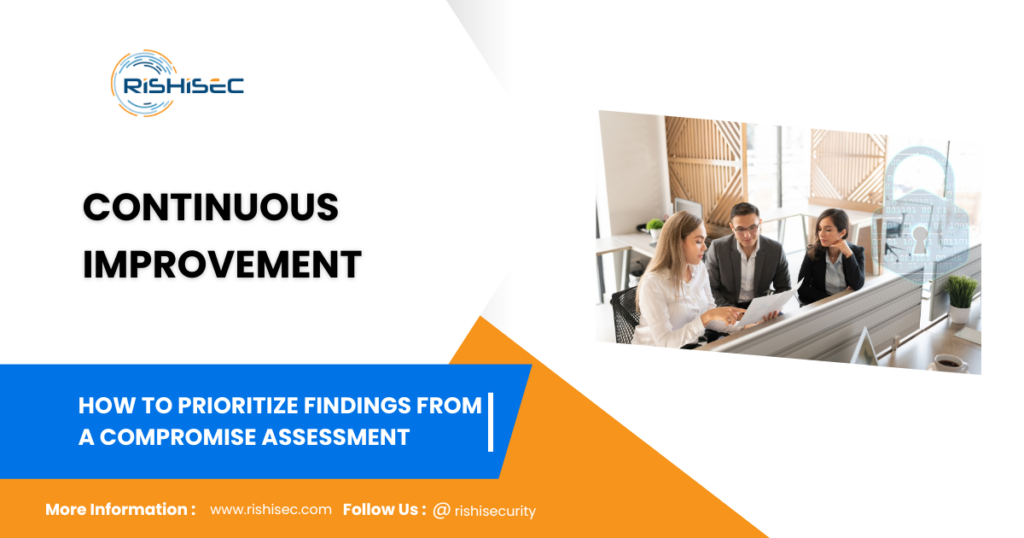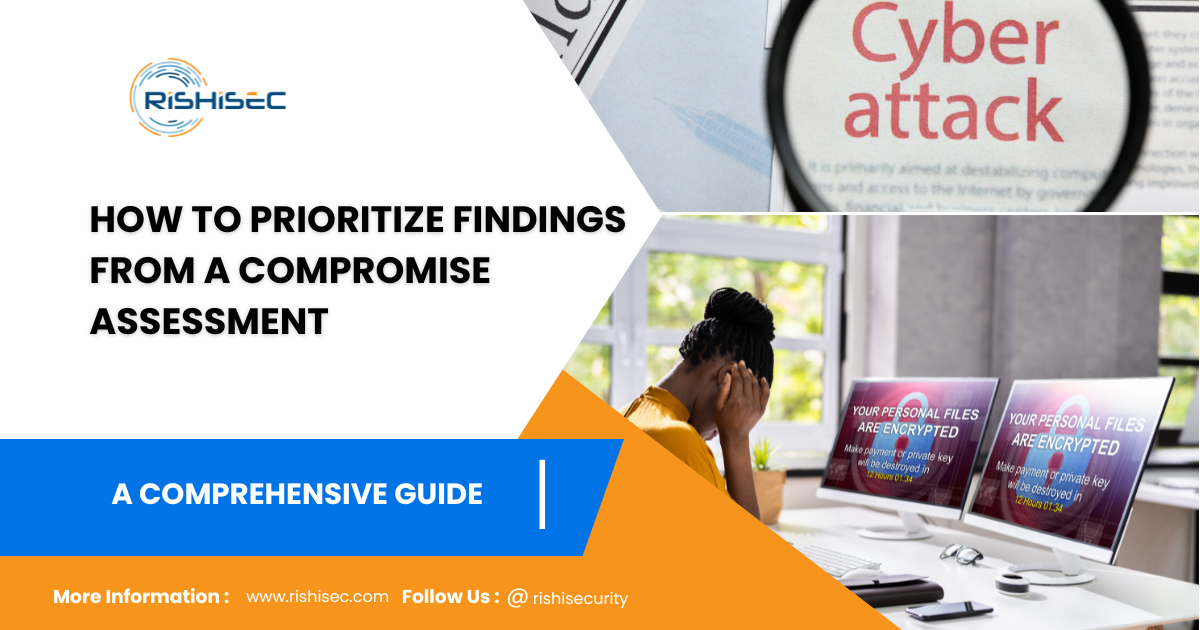Contents
How to Prioritize Findings from a Compromise Assessment
In cybersecurity, you need to do a compromise assessment to find and fix weaknesses in your organization. But after you gather the findings, the real challenge is figuring out which ones to focus on first. If you don’t have a clear plan for prioritizing, you might waste resources and leave important weaknesses unaddressed. This guide will help you organize these findings so your cybersecurity efforts are effective and make a real difference.
1. Understanding the Significance of Findings

Understanding the Significance of Findings
Before diving into prioritization, it’s essential to understand the significance of each finding. Not all vulnerabilities pose the same level of risk. Consider the following factors:
- Exploitability: How easy is it for an attacker to exploit this vulnerability?
- Impact: What would be the potential impact if the vulnerability were exploited?
- Exposure: How exposed is this vulnerability within your network?
By evaluating these factors, you can begin to categorize findings based on their potential threat level.
2. Categorizing Findings
Effective prioritization begins with proper categorization. Group findings into the following categories:
- Critical: Immediate attention required due to high exploitability and severe impact.
- High: Significant risk but may not require immediate action if mitigated soon.
- Medium: Moderate risk that should be addressed in the medium term.
- Low: Minor risks that can be scheduled for long-term remediation.
3. Assessing Business Impact
Align findings with business impact to prioritize them effectively. Consider how each finding affects critical business functions:
- Operational Disruption: Does the finding have the potential to disrupt business operations?
- Compliance Requirements: Does the finding affect your organization’s compliance with regulations?
- Reputation Risk: Could the finding damage your organization’s reputation?
Prioritizing based on business impact ensures that the most critical issues are addressed promptly.
4. Risk-Based Approach

Adopt a risk-based approach to prioritize findings. Use a risk matrix to assess:
- Likelihood of Exploitation: Evaluate how likely it is that the vulnerability will be exploited.
- Potential Damage: Assess the potential damage if the vulnerability is exploited.
By mapping findings onto a risk matrix, you can visually represent and prioritize them based on their overall risk level.
5. Developing an Action Plan to Prioritize Findings
Once findings are prioritized, develop a detailed action plan:
- Immediate Remediation: Address critical findings with immediate remediation actions.
- Scheduled Actions: Plan remediation for high and medium findings within a specified timeframe.
- Monitoring: Implement ongoing monitoring for low-risk findings to ensure they do not escalate.
6. Communicating Findings
Effective communication is key to ensuring that prioritized findings are addressed. Use clear and concise reporting to convey the urgency and impact of each finding to relevant stakeholders. Include:
- Executive Summary: A high-level overview of the most critical findings.
- Detailed Analysis: In-depth details for each prioritized finding.
- Actionable Recommendations: Clear recommendations for remediation.
7. Continuous Improvement

Prioritizing findings is not a one-time task, so you must continuously review and adjust your process as threats evolve and your organization changes. Also, update your action plans regularly and communicate with stakeholders to keep your cybersecurity posture strong and effective.
Conclusion
Sorting the findings from a compromise assessment is an important step in improving your organization’s cybersecurity. But if you don’t follow a clear process—like grouping the findings, checking how they affect your business, and making a plan—you could struggle to manage risks effectively. For extra help with your cybersecurity strategy, try SentryCA’s advanced assessment tools and keep your organization safe.
Experience Advanced Cyber security Insights with SentryCA
Elevate your cybersecurity strategy by using SentryCA’s cutting-edge assessment solutions. Because our tools take a comprehensive approach to prioritizing and addressing vulnerabilities, you can tailor your efforts to fit your organization’s specific needs. Furthermore, start your free trial today to experience how SentryCA enhances your cybersecurity posture with actionable insights and streamlined assessments.
You may also find this post interesting and unique, Real-World Examples of Compromise Assessments: Enhancing Cybersecurity Through Practical Insights


